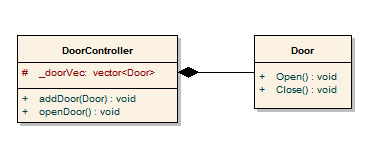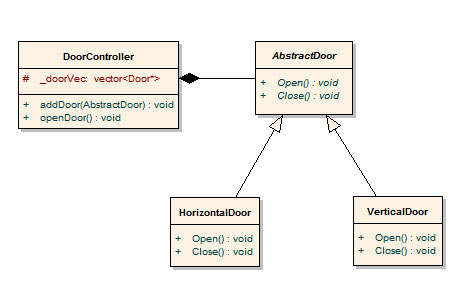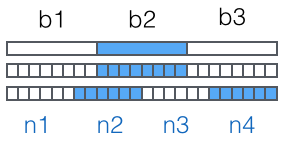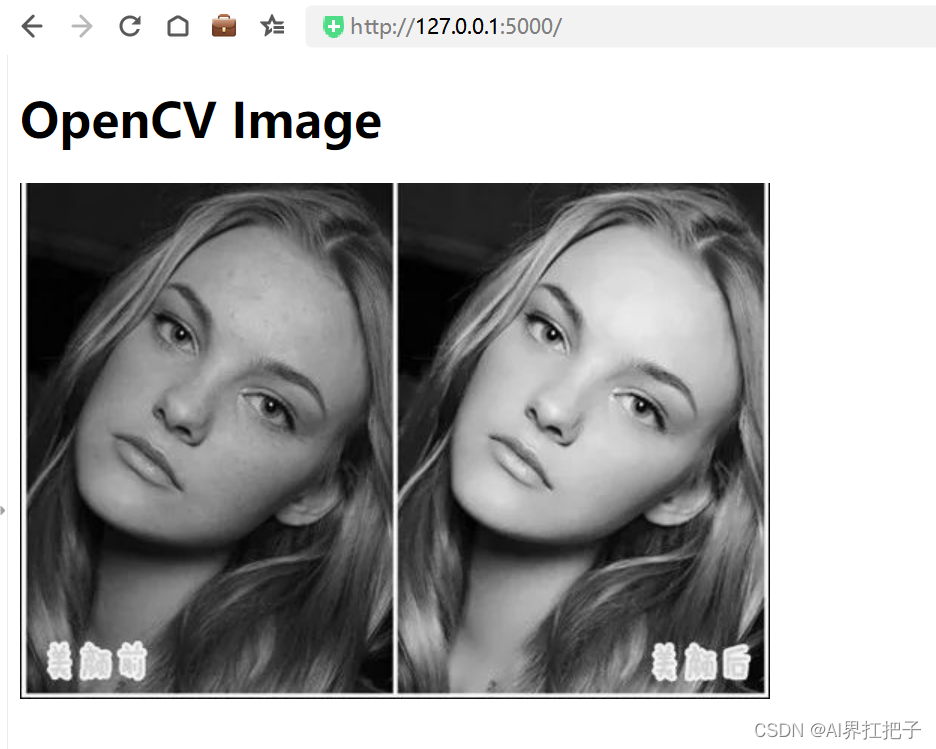Introduction
學習過STL的container後,想要存取每一個iterator,你一定寫過以下的程式
 #include < vector >
#include < vector >  #include < iostream >
#include < iostream > 
 using namespace std;
using namespace std;
 int main() {
int main() { int ia[] = {1, 2, 3};
int ia[] = {1, 2, 3}; vector<int> ivec(ia, ia + sizeof(ia) / sizeof(int));
vector<int> ivec(ia, ia + sizeof(ia) / sizeof(int));
 for(vector<int>::const_iterator iter = ivec.begin(); iter != ivec.end(); ++iter) {
for(vector<int>::const_iterator iter = ivec.begin(); iter != ivec.end(); ++iter) { cout << *iter << endl;
cout << *iter << endl; }
} }
}
執行結果
 1
1  2
2  3
3
當時我覺得STL什麼都好,就是以下這一串又臭又長
 for (vector < int > ::const_iterator iter = ivec.begin(); iter != ivec.end(); ++ iter) {
for (vector < int > ::const_iterator iter = ivec.begin(); iter != ivec.end(); ++ iter) {
若不常寫,一時還會寫不出來,其實若配合container,C++其實不應該這樣寫迴圈,正確的方式該使用for_each(),語法會變的相當簡單。
for_each()事實上是個function template,其實做如下[effective STL item 41]
 template < typename InputIterator, typename Function >
template < typename InputIterator, typename Function >  Function for_each(InputIterator beg, InputIterator end, Function f) {
Function for_each(InputIterator beg, InputIterator end, Function f) { while(beg != end)
while(beg != end)  f(*beg++);
f(*beg++); }
} 
由以上source可知,for_each()只能配合global function和function object。
以下我們將對procedure based、object oriented、generics三種paradigm與for_each()搭配做探討。
Procedure Based與for_each()搭配
1.不傳入參數
 /*
/* 2
 (C) OOMusou 2007 http://oomusou.cnblogs.com
(C) OOMusou 2007 http://oomusou.cnblogs.com3
 Filename : GenericAlgo_for_each_GlobalFunction.cpp
Filename : GenericAlgo_for_each_GlobalFunction.cpp4
 Compiler : Visual C++ 8.0 / BCB 6.0 / gcc 3.4.2 / ISO C++
Compiler : Visual C++ 8.0 / BCB 6.0 / gcc 3.4.2 / ISO C++5
 Description : Demo how to use for_each with global function
Description : Demo how to use for_each with global function6
 Release : 05/11/2007 1.0
Release : 05/11/2007 1.07
 */
*/ 8
 #include < iostream >
#include < iostream > 9
 #include < vector >
#include < vector > 10
 #include < iostream >
#include < iostream > 11
 #include < algorithm >
#include < algorithm > 12

13
 using namespace std;
using namespace std;14

15
 void printElem( int & elem) {
void printElem( int & elem) {16
 cout << elem << endl;
cout << elem << endl;17
 }
} 18

19
 int main() {
int main() {20
 int ia[] = {1, 2, 3};
int ia[] = {1, 2, 3};21
 vector<int> ivec(ia, ia + sizeof(ia) / sizeof(int));
vector<int> ivec(ia, ia + sizeof(ia) / sizeof(int));22

23
 for_each(ivec.begin(), ivec.end(), printElem);
for_each(ivec.begin(), ivec.end(), printElem);24
 }
}
執行結果
 1
1  2
2  3
3
23行
 for_each(ivec.begin(), ivec.end(), printElem);
for_each(ivec.begin(), ivec.end(), printElem);
只需將vector::begin(),vector::end()和global function name傳給for_each()即可,再也不用for迴圈那種複雜的語法了。
2.傳入參數
若要傳參數給global function,就不能再只傳global function name而已,必須透過ptr_fun()這個function adapter將global function轉成function object,然後再用bind2nd()將參數bind成一個function object。
 /*
/* 2
 (C) OOMusou 2007 http://oomusou.cnblogs.com
(C) OOMusou 2007 http://oomusou.cnblogs.com3
 Filename : GenericAlgo_for_each_GlobalFunctionWithParameter.cpp
Filename : GenericAlgo_for_each_GlobalFunctionWithParameter.cpp4
 Compiler : Visual C++ 8.0 / BCB 6.0 / gcc 3.4.2 / ISO C++
Compiler : Visual C++ 8.0 / BCB 6.0 / gcc 3.4.2 / ISO C++5
 Description : Demo how to use for_each with global function with Parameter
Description : Demo how to use for_each with global function with Parameter6
 Release : 05/11/2007 1.0
Release : 05/11/2007 1.07
 */
*/ 8
 #include < iostream >
#include < iostream > 9
 #include < vector >
#include < vector > 10
 #include < iostream >
#include < iostream > 11
 #include < algorithm >
#include < algorithm > 12
 #include < functional >
#include < functional > 13

14
 using namespace std;
using namespace std;15

16
 void printElem( int elem, const char * prefix) {
void printElem( int elem, const char * prefix) {17
 cout << prefix << elem << endl;
cout << prefix << elem << endl;18
 }
} 19

20
 int main() {
int main() {21
 int ia[] = {1, 2, 3};
int ia[] = {1, 2, 3};22
 vector<int> ivec(ia, ia + sizeof(ia) / sizeof(int));
vector<int> ivec(ia, ia + sizeof(ia) / sizeof(int));23

24
 for_each(ivec.begin(), ivec.end(), bind2nd(ptr_fun(printElem), "Element:"));
for_each(ivec.begin(), ivec.end(), bind2nd(ptr_fun(printElem), "Element:"));25
 }
}
執行結果
 Element: 1
Element: 1  Element: 2
Element: 2  Element: 3
Element: 3
Object Oriented與for_each()搭配
1.不傳入參數
使用function object
 /*
/* 2
 (C) OOMusou 2007 http://oomusou.cnblogs.com
(C) OOMusou 2007 http://oomusou.cnblogs.com3
 Filename : GenericAlgo_for_each_FunctionObject.cpp
Filename : GenericAlgo_for_each_FunctionObject.cpp4
 Compiler : Visual C++ 8.0 / BCB 6.0 / gcc 3.4.2 / ISO C++
Compiler : Visual C++ 8.0 / BCB 6.0 / gcc 3.4.2 / ISO C++5
 Description : Demo how to use for_each with function object
Description : Demo how to use for_each with function object6
 Release : 05/11/2007 1.0
Release : 05/11/2007 1.07
 */
*/ 8
 #include < iostream >
#include < iostream > 9
 #include < vector >
#include < vector > 10
 #include < iostream >
#include < iostream > 11
 #include < algorithm >
#include < algorithm > 12

13
 using namespace std;
using namespace std;14

15
 struct printElem {
struct printElem {16
 void operator() (int elem) {
void operator() (int elem) {17
 cout << elem << endl;
cout << elem << endl;18
 }
} 19
 } ;
} ;20

21
 int main() {
int main() {22
 int ia[] = {1, 2, 3};
int ia[] = {1, 2, 3};23
 vector<int> ivec(ia, ia + sizeof(ia) / sizeof(int));
vector<int> ivec(ia, ia + sizeof(ia) / sizeof(int));24

25
 for_each(ivec.begin(), ivec.end(), printElem());
for_each(ivec.begin(), ivec.end(), printElem());26
 }
}
執行結果
 1
1  2
2  3
3
2.傳入參數
若使用function object,也可以將參數傳給printElem(),透過constructor的技巧接收參數。
 /*
/* 2
 (C) OOMusou 2007 http://oomusou.cnblogs.com
(C) OOMusou 2007 http://oomusou.cnblogs.com3
 Filename : GenericAlgo_for_each_FunctionObjectWithParameter.cpp
Filename : GenericAlgo_for_each_FunctionObjectWithParameter.cpp4
 Compiler : Visual C++ 8.0 / BCB 6.0 / gcc 3.4.2 / ISO C++
Compiler : Visual C++ 8.0 / BCB 6.0 / gcc 3.4.2 / ISO C++5
 Description : Demo how to use for_each with function object with parameter
Description : Demo how to use for_each with function object with parameter6
 Release : 05/11/2007 1.0
Release : 05/11/2007 1.07
 */
*/ 8
 #include < iostream >
#include < iostream > 9
 #include < vector >
#include < vector > 10
 #include < iostream >
#include < iostream > 11
 #include < algorithm >
#include < algorithm > 12

13
 using namespace std;
using namespace std;14

15
 struct printElem {
struct printElem {16
 const char* _prefix;
const char* _prefix;17

18
 printElem(const char* prefix) : _prefix(prefix) {}
printElem(const char* prefix) : _prefix(prefix) {}19

20
 void operator() (int elem) {
void operator() (int elem) {21
 cout << _prefix << elem << endl;
cout << _prefix << elem << endl;22
 }
} 23
 } ;
} ;24

25
 int main() {
int main() {26
 int ia[] = {1, 2, 3};
int ia[] = {1, 2, 3};27
 vector<int> ivec(ia, ia + sizeof(ia) / sizeof(int));
vector<int> ivec(ia, ia + sizeof(ia) / sizeof(int));28

29
 for_each(ivec.begin(), ivec.end(), printElem("Element:"));
for_each(ivec.begin(), ivec.end(), printElem("Element:"));30
 }
}
執行結果
 Element: 1
Element: 1  Element: 2
Element: 2  Element: 3
Element: 3
function object有很多種寫法,但只要是function object都可以跟for_each()合作。
3.member_function與for_each()搭配
3.1 不傳入參數
本文的重點來了,在物件導向世界裡,最常用的就是for_each()配合member function,這該怎麼寫呢?直覺會這樣子寫
 for_each(_doorVec.begin(), _doorVec.end(), & Door::open);
for_each(_doorVec.begin(), _doorVec.end(), & Door::open);
由於global function name本身就是一個pointer,所以想藉由&Door::open傳進一個address,但這樣compile並不會過,正確解法是
 for_each(_doorVec.begin(), _doorVec.end(), mem_fun_ref( & Door::open));
for_each(_doorVec.begin(), _doorVec.end(), mem_fun_ref( & Door::open));
透過mem_fun_ref()這個function adapter將member function轉成function object。

 /*
/* 2
 (C) OOMusou 2007 http://oomusou.cnblogs.com
(C) OOMusou 2007 http://oomusou.cnblogs.com3

4
 Filename : GenericAlgo_for_each_MemberFunctionObject.cpp
Filename : GenericAlgo_for_each_MemberFunctionObject.cpp5
 Compiler : Visual C++ 8.0 / BCB 6.0 / gcc 3.4.2 / ISO C++
Compiler : Visual C++ 8.0 / BCB 6.0 / gcc 3.4.2 / ISO C++6
 Description : Demo how to use for_each with member function with object
Description : Demo how to use for_each with member function with object7
 Release : 05/11/2007 1.0
Release : 05/11/2007 1.08
 */
*/ 9
 #include < vector >
#include < vector > 10
 #include < iostream >
#include < iostream > 11
 #include < algorithm >
#include < algorithm > 12
 #include < functional >
#include < functional > 13

14
 using namespace std;
using namespace std;15

16
 class Door {
class Door {17
 public:
public:18
 void open() const {
void open() const {19
 cout << "open door horizontally" << endl;
cout << "open door horizontally" << endl;20
 }
}21

22
 void close() const {
void close() const {23
 cout << "close door horizontally" << endl;
cout << "close door horizontally" << endl;24
 }
}25
 } ;
} ;26

27
 class DoorController {
class DoorController {28
 protected:
protected:29
 vector<Door> _doorVec;
vector<Door> _doorVec;30

31
 public:
public:32
 void addDoor(Door aDoor) {
void addDoor(Door aDoor) {33
 _doorVec.push_back(aDoor);
_doorVec.push_back(aDoor);34
 }
}35

36
 void openDoor() const {
void openDoor() const {37
 for_each(_doorVec.begin(), _doorVec.end(), mem_fun_ref(&Door::open));
for_each(_doorVec.begin(), _doorVec.end(), mem_fun_ref(&Door::open));38
 }
}39
 } ;
} ;40

41
 int main() {
int main() {42
 DoorController dc;
DoorController dc;43
 dc.addDoor(Door());
dc.addDoor(Door());44
 dc.addDoor(Door());
dc.addDoor(Door());45
 dc.openDoor();
dc.openDoor();46
 }
}
執行結果
 open door horizontally
open door horizontally open door horizontally
open door horizontally
37行
 for_each(_doorVec.begin(), _doorVec.end(), mem_fun_ref( & Door::open));
for_each(_doorVec.begin(), _doorVec.end(), mem_fun_ref( & Door::open));
值得注意的是,mem_fun_ref()用在object的member function。若要搭配多型,vector必須放pointer,也就是得使用object pointer的member function,此時得使用mem_fun()將member function轉成function object。

 /*
/* 2
 (C) OOMusou 2007 http://oomusou.cnblogs.com
(C) OOMusou 2007 http://oomusou.cnblogs.com3

4
 Filename : GenericAlgo_for_each_MemberFunctionObjectPointer.cpp
Filename : GenericAlgo_for_each_MemberFunctionObjectPointer.cpp5
 Compiler : Visual C++ 8.0 / BCB 6.0 / gcc 3.4.2 / ISO C++
Compiler : Visual C++ 8.0 / BCB 6.0 / gcc 3.4.2 / ISO C++6
 Description : Demo how to use for_each with member function with object pointer
Description : Demo how to use for_each with member function with object pointer7
 Release : 05/11/2007 1.0
Release : 05/11/2007 1.08
 */
*/ 9
 #include < vector >
#include < vector > 10
 #include < iostream >
#include < iostream > 11
 #include < algorithm >
#include < algorithm > 12
 #include < functional >
#include < functional > 13

14
 using namespace std;
using namespace std;15

16
 class AbstractDoor {
class AbstractDoor {17
 public:
public:18
 virtual void open() const {
virtual void open() const {19
 cout << "open door horizontally" << endl;
cout << "open door horizontally" << endl;20
 }
}21

22
 virtual void close() const {
virtual void close() const {23
 cout << "close door horizontally" << endl;
cout << "close door horizontally" << endl;24
 }
}25
 } ;
} ;26

27
 class HorizontalDoor : public AbstractDoor {
class HorizontalDoor : public AbstractDoor {28
 } ;
} ;29

30
 class VerticalDoor : public AbstractDoor {
class VerticalDoor : public AbstractDoor {31
 public:
public:32
 void open() const {
void open() const {33
 cout << "open door vertically" << endl;
cout << "open door vertically" << endl;34
 }
}35

36
 void close() const {
void close() const {37
 cout << "close door vertically" << endl;
cout << "close door vertically" << endl;38
 }
}39
 } ;
} ;40

41
 class DoorController {
class DoorController {42
 protected:
protected:43
 vector<AbstractDoor*> _doorVec;
vector<AbstractDoor*> _doorVec;44

45
 public:
public:46
 void addDoor(AbstractDoor& aDoor) {
void addDoor(AbstractDoor& aDoor) {47
 _doorVec.push_back(&aDoor);
_doorVec.push_back(&aDoor);48
 }
}49

50
 void openDoor() const {
void openDoor() const {51
 for_each(_doorVec.begin(), _doorVec.end(), mem_fun(&AbstractDoor::open));
for_each(_doorVec.begin(), _doorVec.end(), mem_fun(&AbstractDoor::open));52
 }
}53
 } ;
} ;54

55
 int main() {
int main() {56
 DoorController dc;
DoorController dc;57
 dc.addDoor(HorizontalDoor());
dc.addDoor(HorizontalDoor());58
 dc.addDoor(VerticalDoor());
dc.addDoor(VerticalDoor());59
 dc.openDoor();
dc.openDoor();60
 }
}
執行結果
 open door horizontally
open door horizontally open door vertically
open door vertically
51行
 for_each(_doorVec.begin(), _doorVec.end(), mem_fun( & AbstractDoor::open));
for_each(_doorVec.begin(), _doorVec.end(), mem_fun( & AbstractDoor::open));
使用了mem_fun()。
3.2傳入參數
問題又來了,若要使member function也傳入參數呢?這時得使用bind2nd將function object和參數bind在一起,變成另外一個新的function object。
 /*
/* 2
 (C) OOMusou 2007 http://oomusou.cnblogs.com
(C) OOMusou 2007 http://oomusou.cnblogs.com3

4
 Filename : GenericAlgo_for_each_MemberFunctionObjectPointerWithParameter.cpp
Filename : GenericAlgo_for_each_MemberFunctionObjectPointerWithParameter.cpp5
 Compiler : Visual C++ 8.0 / BCB 6.0 / gcc 3.4.2 / ISO C++
Compiler : Visual C++ 8.0 / BCB 6.0 / gcc 3.4.2 / ISO C++6
 Description : Demo how to use for_each with member function with object pointer
Description : Demo how to use for_each with member function with object pointer7
 Release : 05/11/2007 1.0
Release : 05/11/2007 1.08
 */
*/ 9
 #include < iostream >
#include < iostream > 10
 #include < vector >
#include < vector > 11
 #include < algorithm >
#include < algorithm > 12
 #include < functional >
#include < functional > 13

14
 using namespace std;
using namespace std;15

16
 class AbstractDoor {
class AbstractDoor {17
 public:
public:18
 virtual void open() const {
virtual void open() const {19
 cout << "open door horizontally" << endl;
cout << "open door horizontally" << endl;20
 }
}21

22
 virtual void close() const {
virtual void close() const {23
 cout << "close door horizontally" << endl;
cout << "close door horizontally" << endl;24
 }
}25

26
 virtual void openDoorBy(const char* name) const {
virtual void openDoorBy(const char* name) const {27
 cout << name << " ";
cout << name << " ";28
 open();
open();29
 }
}30
 } ;
} ;31

32
 class HorizontalDoor : public AbstractDoor {
class HorizontalDoor : public AbstractDoor {33
 } ;
} ;34

35
 class VerticalDoor : public AbstractDoor {
class VerticalDoor : public AbstractDoor {36
 public:
public:37
 void open() const {
void open() const {38
 cout << "open door vertically" << endl;
cout << "open door vertically" << endl;39
 }
}40

41
 void close() const {
void close() const {42
 cout << "close door vertically" << endl;
cout << "close door vertically" << endl;43
 }
}44
 } ;
} ;45

46
 class DoorController {
class DoorController {47
 protected:
protected:48
 vector<AbstractDoor*> _doorVec;
vector<AbstractDoor*> _doorVec;49

50
 public:
public:51
 void addDoor(AbstractDoor& aDoor) {
void addDoor(AbstractDoor& aDoor) {52
 _doorVec.push_back(&aDoor);
_doorVec.push_back(&aDoor);53
 }
}54

55
 void openDoor() const {
void openDoor() const {56
 for_each(_doorVec.begin(), _doorVec.end(), bind2nd(mem_fun(&AbstractDoor::openDoorBy), "John"));
for_each(_doorVec.begin(), _doorVec.end(), bind2nd(mem_fun(&AbstractDoor::openDoorBy), "John"));57
 }
}58
 } ;
} ;59

60
 int main() {
int main() {61
 DoorController dc;
DoorController dc;62
 dc.addDoor(HorizontalDoor());
dc.addDoor(HorizontalDoor());63
 dc.addDoor(VerticalDoor());
dc.addDoor(VerticalDoor());64
 dc.openDoor();
dc.openDoor();65
 }
}
執行結果
 John open door horizontally
John open door horizontally2
 John open door vertically
John open door vertically
56行
 for_each(_doorVec.begin(), _doorVec.end(), bind2nd(mem_fun( & AbstractDoor::openDoorBy), " John " ));
for_each(_doorVec.begin(), _doorVec.end(), bind2nd(mem_fun( & AbstractDoor::openDoorBy), " John " ));
透過了bind2nd將參數結合後,成為一個新的function object。
Generics與for_each()搭配
1.Function Template
1.1不傳入參數
在泛型世界裡,那for_each()該怎麼配合function template呢?
 /*
/* 2
 (C) OOMusou 2007 http://oomusou.cnblogs.com
(C) OOMusou 2007 http://oomusou.cnblogs.com3
 Filename : GenericAlgo_for_each_FunctionTemplate.cpp
Filename : GenericAlgo_for_each_FunctionTemplate.cpp4
 Compiler : Visual C++ 8.0 / BCB 6.0 / gcc 3.4.2 / ISO C++
Compiler : Visual C++ 8.0 / BCB 6.0 / gcc 3.4.2 / ISO C++5
 Description : Demo how to use for_each with function template
Description : Demo how to use for_each with function template6
 Release : 05/11/2007 1.0
Release : 05/11/2007 1.07
 */
*/ 8
 #include < iostream >
#include < iostream > 9
 #include < vector >
#include < vector > 10
 #include < iostream >
#include < iostream > 11
 #include < algorithm >
#include < algorithm > 12

13
 using namespace std;
using namespace std;14

15
 template < typename T >
template < typename T > 16
 void printElem(T elem) {
void printElem(T elem) {17
 cout << elem << endl;
cout << elem << endl;18
 }
} 19

20
 int main() {
int main() {21
 int ia[] = {1, 2, 3};
int ia[] = {1, 2, 3};22
 vector<int> ivec(ia, ia + sizeof(ia) / sizeof(int));
vector<int> ivec(ia, ia + sizeof(ia) / sizeof(int));23

24
 for_each(ivec.begin(), ivec.end(), printElem<int>);
for_each(ivec.begin(), ivec.end(), printElem<int>);25
 //for_each(ivec.begin(), ivec.end(), (void(*)(int))printElem);
//for_each(ivec.begin(), ivec.end(), (void(*)(int))printElem);26
 }
}
執行結果
 1
1  2
2  3
3
若使用function template,有兩種寫法
一種是
 for_each(ivec.begin(), ivec.end(), printElem < int > );
for_each(ivec.begin(), ivec.end(), printElem < int > );
由於template function需要在compile時確定型別,所以要加上<int>確定為int型別。
另外一種寫法
 for_each(ivec.begin(), ivec.end(), ( void ( * )( int ))printElem);
for_each(ivec.begin(), ivec.end(), ( void ( * )( int ))printElem);
template function並沒有確定型別,但轉成function pointer時,並須明確轉成int型別的function pointer。
1.2 傳入參數
若要如function object那樣能傳參數呢?funtion template是可以,不過有些限制,若使用nontype parameter,只能使用以下三種型別
1.int或enum
2.pointer:pointer to object,pointer to function,pointer to member。
3.reference:reference to object,reference to function。
 /*
/* 2
 (C) OOMusou 2007 http://oomusou.cnblogs.com
(C) OOMusou 2007 http://oomusou.cnblogs.com3
 Filename : GenericAlgo_for_each_FunctionTemplateWithNontypeParameter.cpp
Filename : GenericAlgo_for_each_FunctionTemplateWithNontypeParameter.cpp4
 Compiler : Visual C++ 8.0 / BCB 6.0 / gcc 3.4.2 / ISO C++
Compiler : Visual C++ 8.0 / BCB 6.0 / gcc 3.4.2 / ISO C++5
 Description : Demo how to use for_each with function template with nontype parameter
Description : Demo how to use for_each with function template with nontype parameter6
 Release : 05/11/2007 1.0
Release : 05/11/2007 1.07
 */
*/ 8
 #include < iostream >
#include < iostream > 9
 #include < vector >
#include < vector > 10
 #include < iostream >
#include < iostream > 11
 #include < algorithm >
#include < algorithm > 12

13
 using namespace std;
using namespace std;14

15
 template < typename T, int i >
template < typename T, int i > 16
 void printElem(T elem) {
void printElem(T elem) {17
 cout << i << ":" << elem << endl;
cout << i << ":" << elem << endl;18
 }
} 19

20
 int main() {
int main() {21
 int ia[] = {1, 2, 3};
int ia[] = {1, 2, 3};22
 vector<int> ivec(ia, ia + sizeof(ia) / sizeof(int));
vector<int> ivec(ia, ia + sizeof(ia) / sizeof(int));23

24
 for_each(ivec.begin(), ivec.end(), printElem<int, 5>);
for_each(ivec.begin(), ivec.end(), printElem<int, 5>);25
 }
}
執行結果
 5 : 1
5 : 1  5 : 2
5 : 2  5 : 3
5 : 3
所以無法如function object那樣可以傳入字串或任意型別,最少在目前ISO C++標準是做不到的。
既然討論了function template,那最具威力的class template是否也能搭配for_each()?
2.Class Template
2.1 不傳入參數
 /*
/* 2
 (C) OOMusou 2007 http://oomusou.cnblogs.com
(C) OOMusou 2007 http://oomusou.cnblogs.com3
 Filename : GenericAlgo_for_each_ClassTemplate.cpp
Filename : GenericAlgo_for_each_ClassTemplate.cpp4
 Compiler : Visual C++ 8.0 / BCB 6.0 / gcc 3.4.2 / ISO C++
Compiler : Visual C++ 8.0 / BCB 6.0 / gcc 3.4.2 / ISO C++5
 Description : Demo how to use for_each with class template
Description : Demo how to use for_each with class template6
 Release : 05/11/2007 1.0
Release : 05/11/2007 1.07
 */
*/ 8
 #include < iostream >
#include < iostream > 9
 #include < vector >
#include < vector > 10
 #include < iostream >
#include < iostream > 11
 #include < algorithm >
#include < algorithm > 12
 #include < functional >
#include < functional > 13

14
 using namespace std;
using namespace std;15

16
 template < typename T >
template < typename T > 17
 class printElem : public unary_function < T, void > {
class printElem : public unary_function < T, void > {18
 public:
public:19
 void operator() (T elem) {
void operator() (T elem) {20
 cout << elem << endl;
cout << elem << endl;21
 }
}22
 } ;
} ;23

24
 int main() {
int main() {25
 int ia[] = {1, 2, 3};
int ia[] = {1, 2, 3};26
 vector<int> ivec(ia, ia + sizeof(ia) / sizeof(int));
vector<int> ivec(ia, ia + sizeof(ia) / sizeof(int));27

28
 for_each(ivec.begin(), ivec.end(), printElem<int>());
for_each(ivec.begin(), ivec.end(), printElem<int>());29
 }
}
執行結果
 1
1  2
2  3
3
17行
 class printElem : public unary_function < T, void > {
class printElem : public unary_function < T, void > {
因為printElem只接受for_each()所傳的參數,算是單參數而已,所以public繼承了unary_function<T,void>,因為for_each的定義
 template < class InputIterator, class UnaryFunction >
template < class InputIterator, class UnaryFunction >  UnaryFunction for_each(InputIterator first, InputIterator last, UnaryFunction f);
UnaryFunction for_each(InputIterator first, InputIterator last, UnaryFunction f);
傳進去的是UnaryFunction型別,第一個type parameter T表示傳入的型別,第二個type parameter void,表示回傳的型別,最後重新定義operator()。
2.2 傳入參數
若要使class template也能傳入參數,一樣利用function object的技巧,借用constructor。
 /*
/* 2
 (C) OOMusou 2007 http://oomusou.cnblogs.com
(C) OOMusou 2007 http://oomusou.cnblogs.com3
 Filename : GenericAlgo_for_each_ClassTemplateWithParameter.cpp
Filename : GenericAlgo_for_each_ClassTemplateWithParameter.cpp4
 Compiler : Visual C++ 8.0 / BCB 6.0 / gcc 3.4.2 / ISO C++
Compiler : Visual C++ 8.0 / BCB 6.0 / gcc 3.4.2 / ISO C++5
 Description : Demo how to use for_each with class template & parameter
Description : Demo how to use for_each with class template & parameter6
 Release : 05/11/2007 1.0
Release : 05/11/2007 1.07
 */
*/ 8
 #include < iostream >
#include < iostream > 9
 #include < vector >
#include < vector > 10
 #include < iostream >
#include < iostream > 11
 #include < algorithm >
#include < algorithm > 12
 #include < functional >
#include < functional > 13

14
 using namespace std;
using namespace std;15

16
 template < typename T, typename U >
template < typename T, typename U > 17
 class printElem : public unary_function < T, void > {
class printElem : public unary_function < T, void > {18
 private:
private:19
 U _prefix;
U _prefix;20

21
 public:
public:22
 printElem(U prefix) : _prefix(prefix) {}
printElem(U prefix) : _prefix(prefix) {}23

24
 void operator() (T elem) {
void operator() (T elem) {25
 cout << _prefix << elem << endl;
cout << _prefix << elem << endl;26
 }
}27
 } ;
} ;28

29
 int main() {
int main() {30
 int ia[] = {1, 2, 3};
int ia[] = {1, 2, 3};31
 vector<int> ivec(ia, ia + sizeof(ia) / sizeof(int));
vector<int> ivec(ia, ia + sizeof(ia) / sizeof(int));32

33
 for_each(ivec.begin(), ivec.end(), printElem<int, const char*>("Element:"));
for_each(ivec.begin(), ivec.end(), printElem<int, const char*>("Element:"));34
 }
}
執行結果
 Element: 1
Element: 1  Element: 2
Element: 2  Element: 3
Element: 3
Conclusion
STL的for_each()事實上很好用,不過由於限制很多,所以常令很多新手卻步,本文試著將所有會遇到問題的地方都提出來討論,包括procedure based、object oriented、generics三種paradigm與for_each()的搭配都涵蓋了,希望對各位有幫助。


















